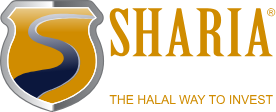Only 42% of small businesses with 99 employees or less offer a retirement plan to their employees according to LIMRA in 2019. This is concerning especially considering that the average mortality age is going up and employees are staying in the workforce for longer periods of time. Considering the number of individuals employed by small businesses and the benefits that can be harvested by the small business owners this rate has to increase in the upcoming years.
So why offer a retirement plan from an owner’s perspective? There are various benefits that are available for employers in offering retirement plans:
- They afford a tax deferral opportunity for owners
- Employer contributions and certain plan expenses can be claimed as tax deductible business expenses
- Provide a competitive advantage in recruiting and retaining quality employees
The most common types of retirement plans utilized by employers include Simple IRAs, SEP IRAs, and 401(k) plans. Some of the more general features and differentiation points of these plans are:
Simple IRAs are commonly used by self-employed individuals or businesses with 100 or fewer employees. Both employees and employers are able to contribute, and the contributions are 100% vested. There are no annual filing requirements and simplified administration is required. Some of the limitations to this type of plan are the lack of loan eligibility for employees as for employers, they are required to make this plan eligible for every employee that has earned $5,000 in the previous two years and is on track to do so again in the following year. The contribution limit is set for employees under 50 at $13,500 a year and allows for a catch up if above the age of 50, increasing the limit to $16,500 a year for 2021. Employers can either match 100% of the first 3% of compensation or contribute 2% of each eligible employee’s compensation
SEP IRAs are most commonly utilized by Sole Proprietors or businesses with very few employees. Employees are unable to contribute as these plans are 100% funded by employers. Withdrawals prior to age 59 and a ½ result in a 10% withdrawal penalty in addition to tax implications. SEP IRAs are easy to setup and maintain, they have no filing requirements and have flexible annual funding requirements in terms of contributing more during more profitable years or minimizing contributions in less profitable years. The maximum contribution limit is set at 25% of compensation and capped at no more than $58,000 (as of 2021) and loans are not permitted in this plan.
| Savings Plan | 2021 Contribution Limit: Under 50 | 2021 Contribution Limit: 50 and Above |
| Simple IRA | $13,500 | $16,500 |
| SEP IRA | $58,000 | $58,000 |
| Solo 401(k) | $58,000 | $64,500 |
The most commonly referenced retirement plans are 401(k) plans. They are the most robust and offer the most customization in terms of employer defined features such as discretionary employer contribution formulas, or vesting scheduling options, among other such features. Unlike the IRA plans that do not permit loans, 401(k)s allow for loans and hardship withdrawals. As of 2021 contributions are capped at $58,000 total from both employee and employer contributions with an additional allowance of $6,500 for employees over age 50 for a total of $64,500. The largest requirements to bear in mind for 401(k)s are the non-discrimination testing, which ensures that employees earning more are not favored by the plans, and the required IRS filing requirements.
Alternatives such as cash balance plans among other options, can be considered as well depending on the individual client’s needs. We hope you were able to benefit from this brief discussion on retirement plans for small businesses. If you have any questions, please do not hesitate to setup a call with one of our investment advisors at ShariaPortfolio.

